Almanac: Fungi Riot
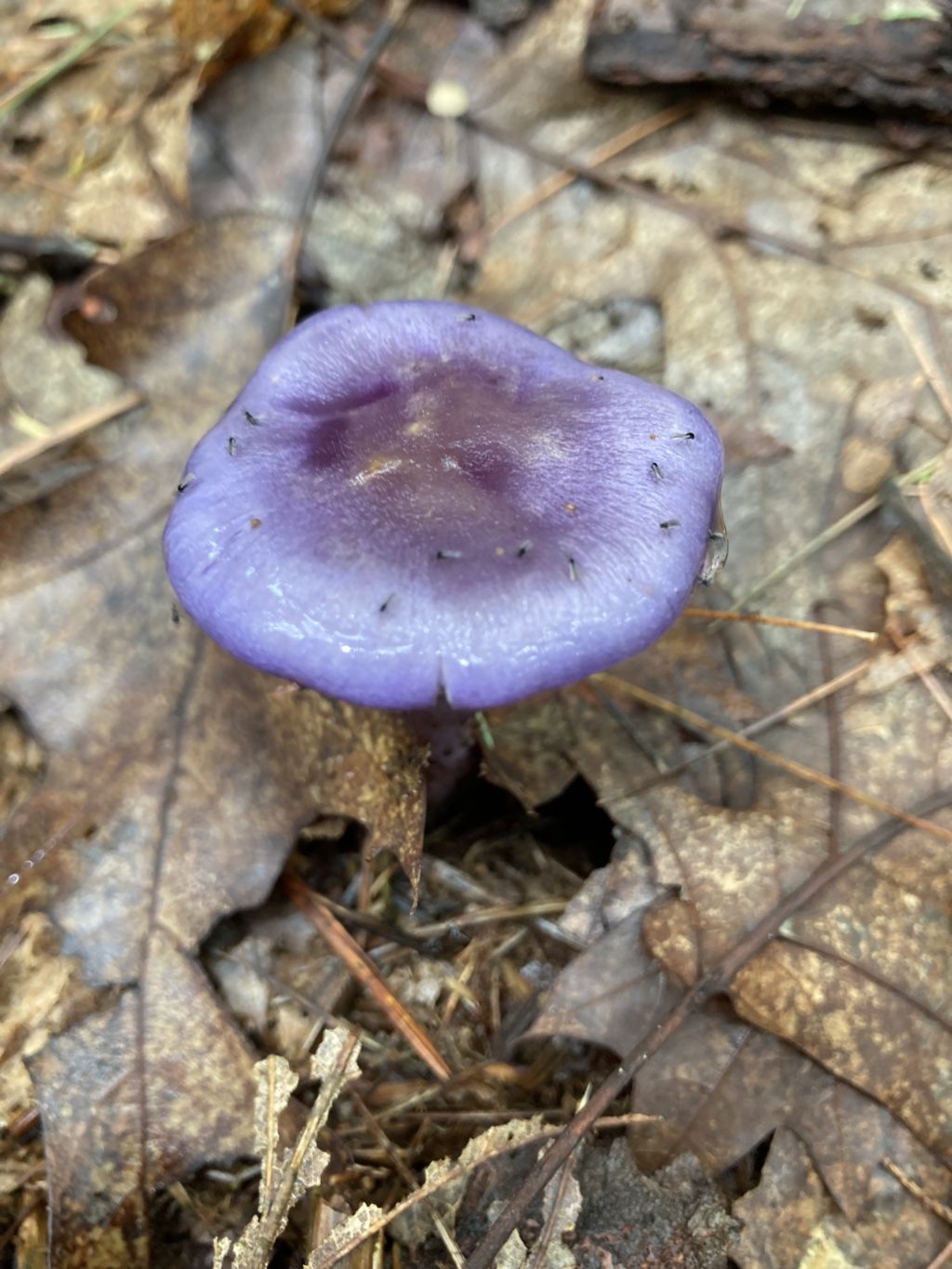
Indigo milk cap mushroom. A rare blue mushroom spotted by Steve Braun on a hike at Mt. Cardigan in New Hampshire. Photo: Stephen Braun
Last weekend two buddies and I met at a trailhead on the eastern slope of Mt. Cardigan in New Hampshire. It had been raining a lot in the previous week—this July has been the wettest on record in southern New Hampshire—and more rain was forecast, so we hustled on our packs, hoping to reach our tent site before the heavens opened up again.
As we hiked along trails that more closely resembled rushing streams I began noticing mushrooms and other fungi that I’d never seen before. In itself this isn’t terribly surprising—I’m not a mycologist and I know by name only about a dozen of the thousands of species of New England fungi. Still, I’ve been hiking for decades and even when I don’t know the names of a particular fungus, I can recognize ones I’ve seen before. And now, walking through the soggy woods, I was seeing many unfamiliar forms, colors, and textures.
The rain held off long enough for us to set camp, then we decided to try for the summit—a wide-open dome of naked granite at about 3,100 feet—despite the cloud cover and drizzly mist. As we gained elevation, the profusion of fungi exceeded even the diversity on the path to base camp. I started to photograph the more colorful or bizarre specimens, but gave up when it became clear that I’d never actually summit if I tried to capture every new example I found. Fungi were simply everywhere. Crazy shelf fungi on trees. Mushrooms ranging in size from barely-visible miniatures to monsters the diameter of dinner plates in literally every color of the rainbow—even blue, which I’d never seen before. Plus really odd-looking forms: jellies, brain-like blobs, coral-like spikes, layer-cakes of white, tan, or brown, and flat, lichen-like growths covering dead leaves. At the end of this column I’ll post a handful that I stopped long enough to capture, which will begin to convey some of this fungal glory, but here I’ll just mention a couple of my more remarkable encounters.
The first was a striking set of three shiny, lipstick-red mushrooms emerging from pale white cups at the base of the stalks.
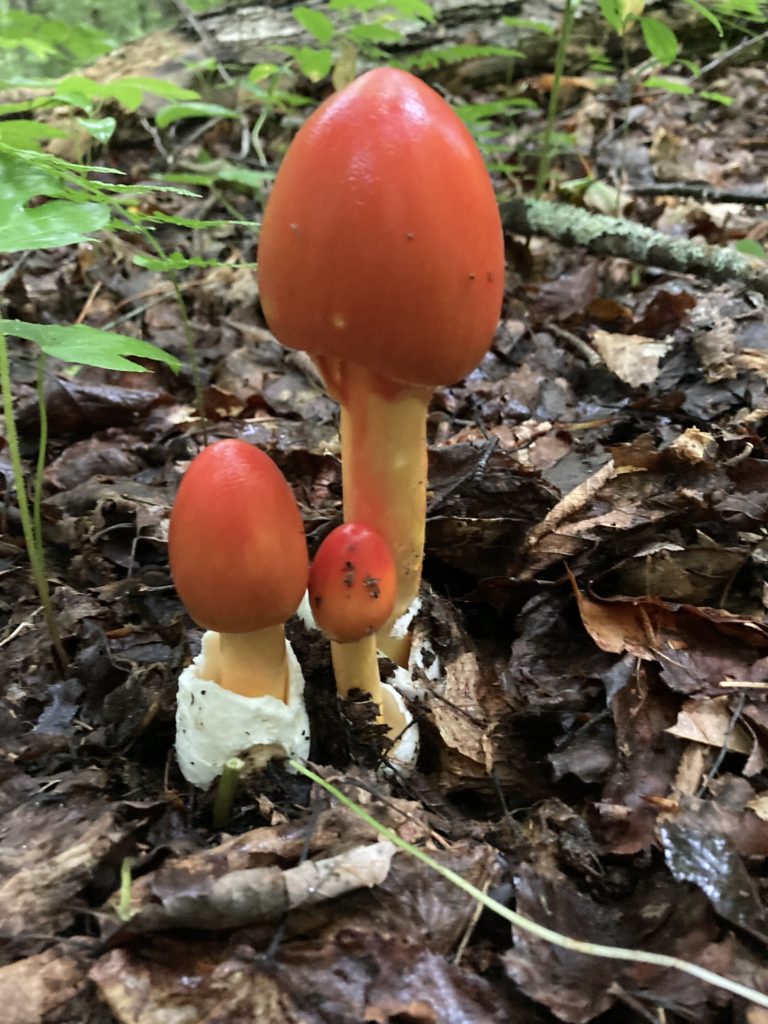
I had no idea what these were—I didn’t bring my mushroom guide on the trip, so I had to look up this and all the other fungi I took pictures of after I returned. The next day these beauties had opened and expanded into an altogether different kind of magnificence.
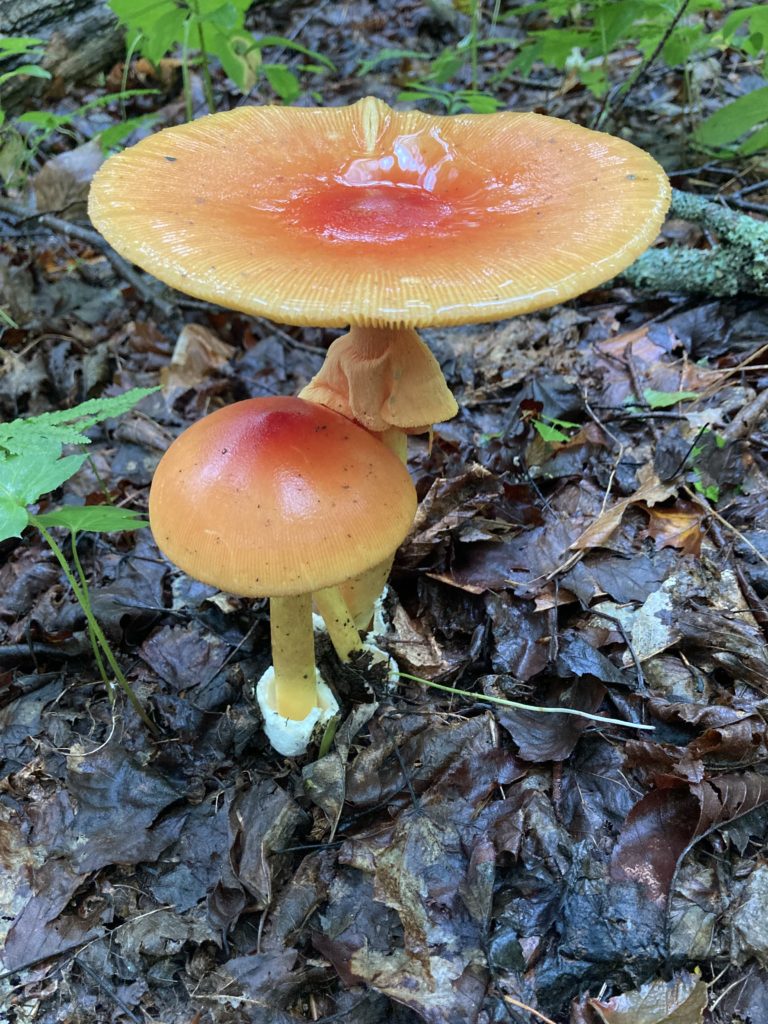
This kind of transformation in only 24 hours is one reason that identifying mushrooms can be challenging—they can have vastly different colors and shapes at different stages of their (often incredibly rapid) growth. These were American Caesar’s mushrooms, so-named because the European version is edible and, allegedly, a favorite of Roman leaders. This mushroom, however, is a member of the amanita family, most of which are quite poisonous, so I would not try eating one unless I was with an expert.
On that topic, however, we did come across a delightful cluster of yellow chanterelles, which are one of only three species distinctive enough for me to confidently consume (the others being giant puffballs and morels). We picked a hatful on our way down from the summit (from which we had some surprisingly lovely views of cloud-covered valleys and distant lakes) and they were a delicious appetizer that evening.
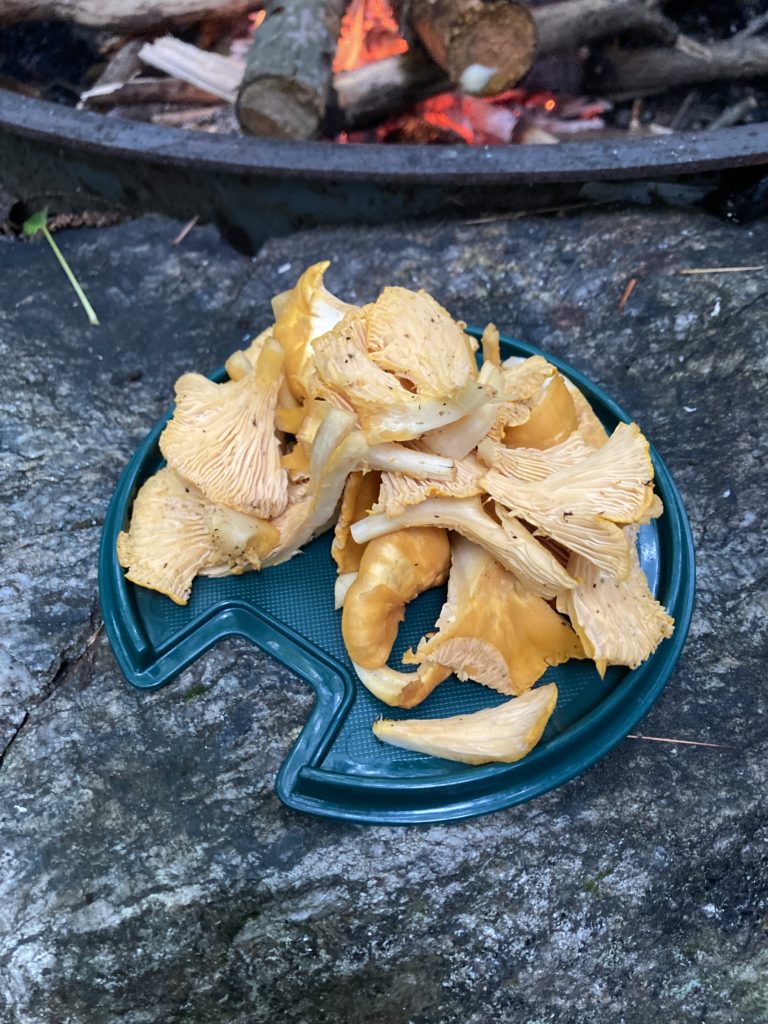
Picking mushrooms, edible or not, does not harm the individual fungi because the visible parts that we see (or eat) are not the bulk of the individual. They are, instead, “fruiting bodies” akin to fruit like cherries or apples. In this case, however, the “tree” is a vast underground network (mycelium) of thread-like hyphae, which extract nutrients and communicate, chemically, with both their hosts (e.g., living or dead trees) and other fungal individuals. If you haven’t yet watched the documentary Fantastic Fungi I highly recommend it, if for no other reason than the breathtaking graphic depictions of mycelium. Though mushroom fruiting bodies are short-lived, the underlying mycelium can be long-lived and massive. A colony that produces brown “shoestring” mushrooms (Armillaria solidipes mushrooms) in Oregon’s Malheur National Forest is estimated to be roughly 2,000 years old and spans an estimated 2,385 acres.
On the second day of hiking, I spotted a small pink-and-white cone-like thing beside the trail. “Maybe it’s some kind of weird spruce bud,” said one of my companions. Having no earthly clue otherwise, I gave it a sniff. Expecting a delicate piney aroma I was hit, instead, with the powerful odor of excrement. It was so distinctive and strong that, disgusting as it was, I sniffed it again, just to make sure it was as truly awful-smelling as I thought. Yup. Sure was.
I didn’t take a shot of this, but I later figured out that what I’d found was a broken-off top of a fungi called “elegant stinkhorn.” I can attest to the “stink” part of that name, but it was a long way from elegant. I’d heard about the stinkhorn family—they’ve all developed their array of fecal-laced aromas to attract flies and beetles that help distribute their spores—but until that moment I’d never experienced just how precisely these simple fungi have mimicked the scent of mammalian poop.
Upon my return from New Hampshire I took a couple of hikes locally to see if our woods are as richly endowed with fungal diversity. On a loop around North Sugarloaf I did see plenty of specimens, including many of our most common red mushrooms, the rosy russula.
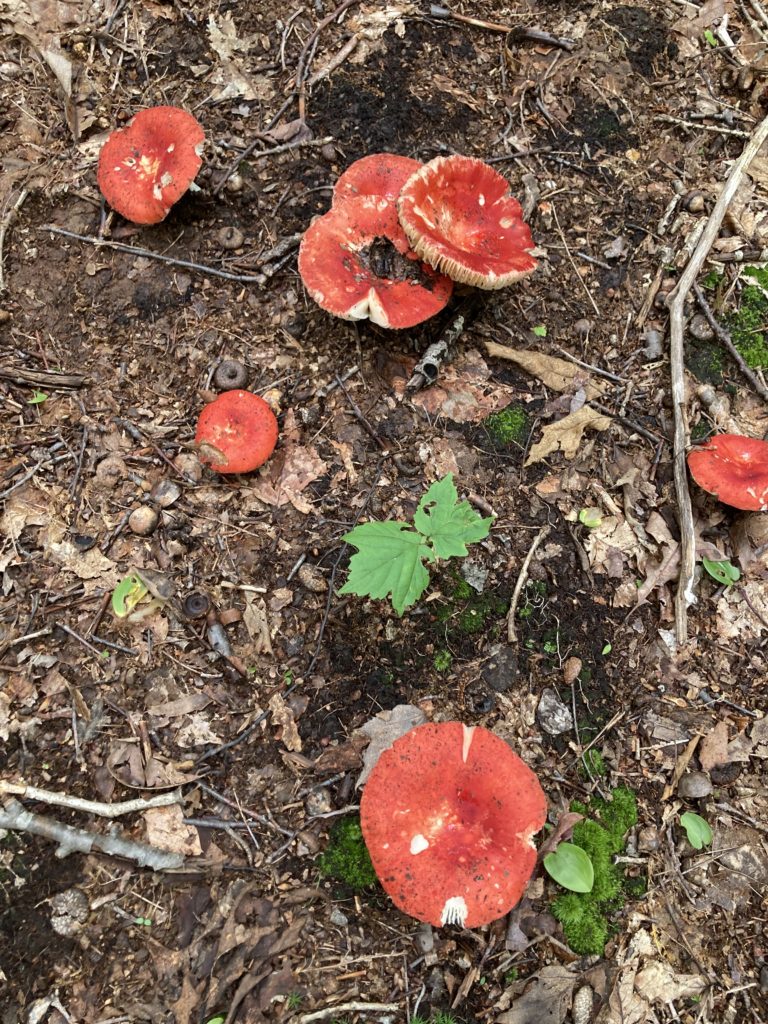
A hike around Atkins Reservoir the other day, however, was disappointing. The next time we get some extended rain, don your raingear and go exploring for these fascinating, often beautiful, often bizarre, and vitally important life forms.
Now, here’s the promised eye candy from the fungi riot of last weekend.
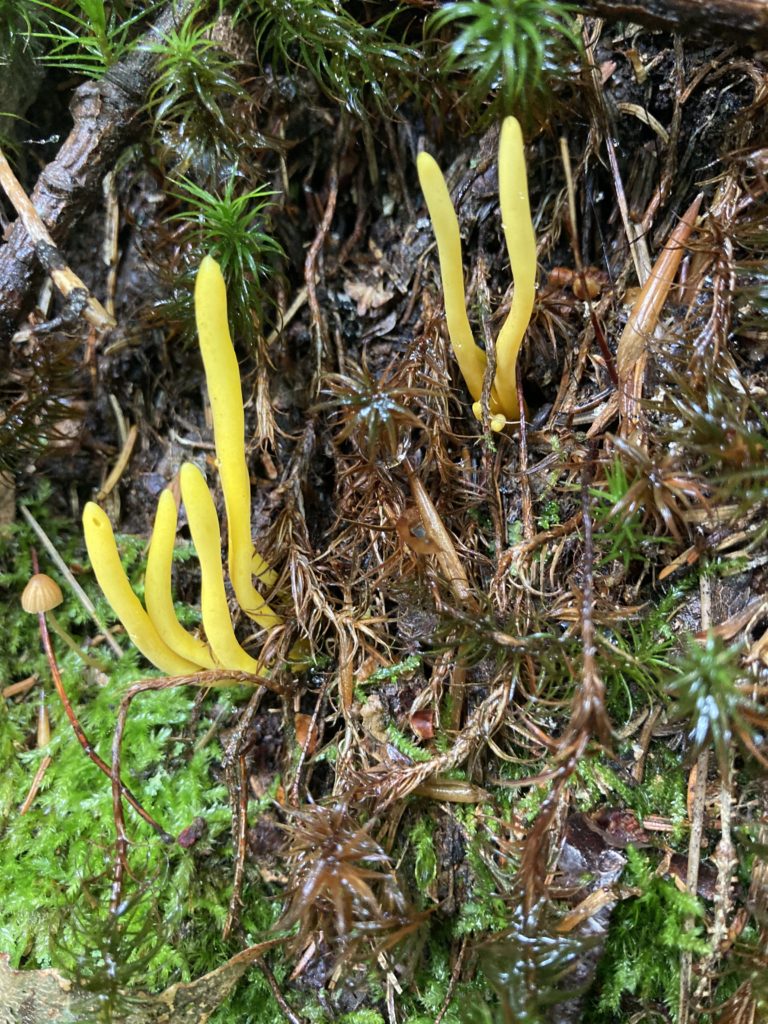
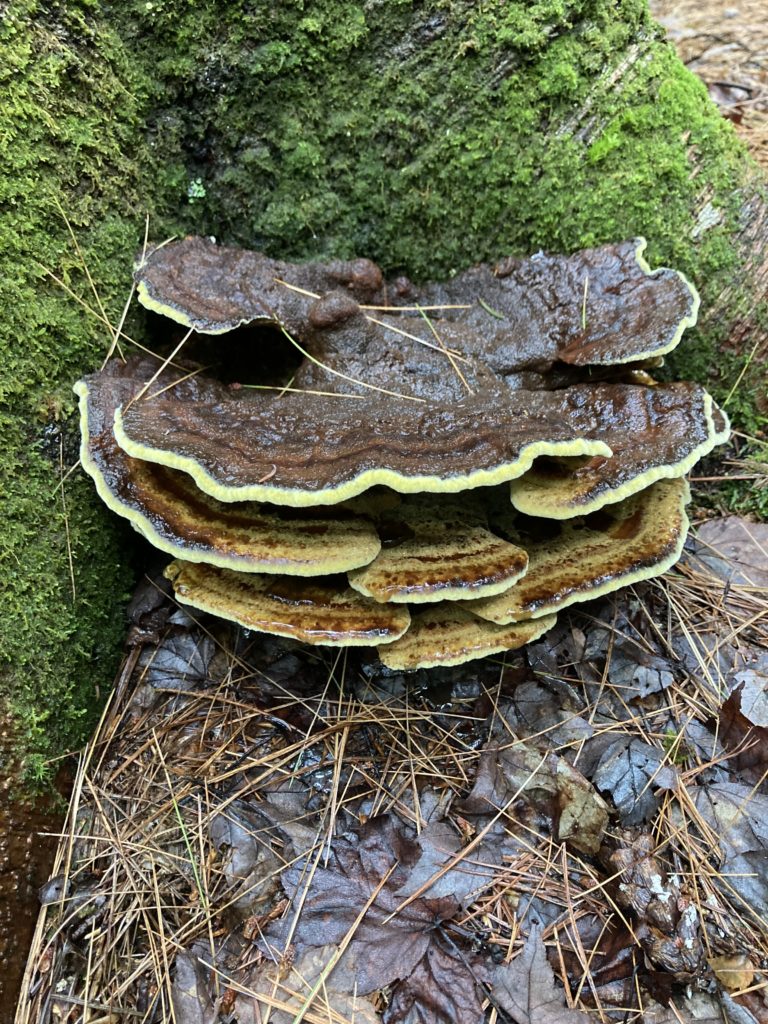
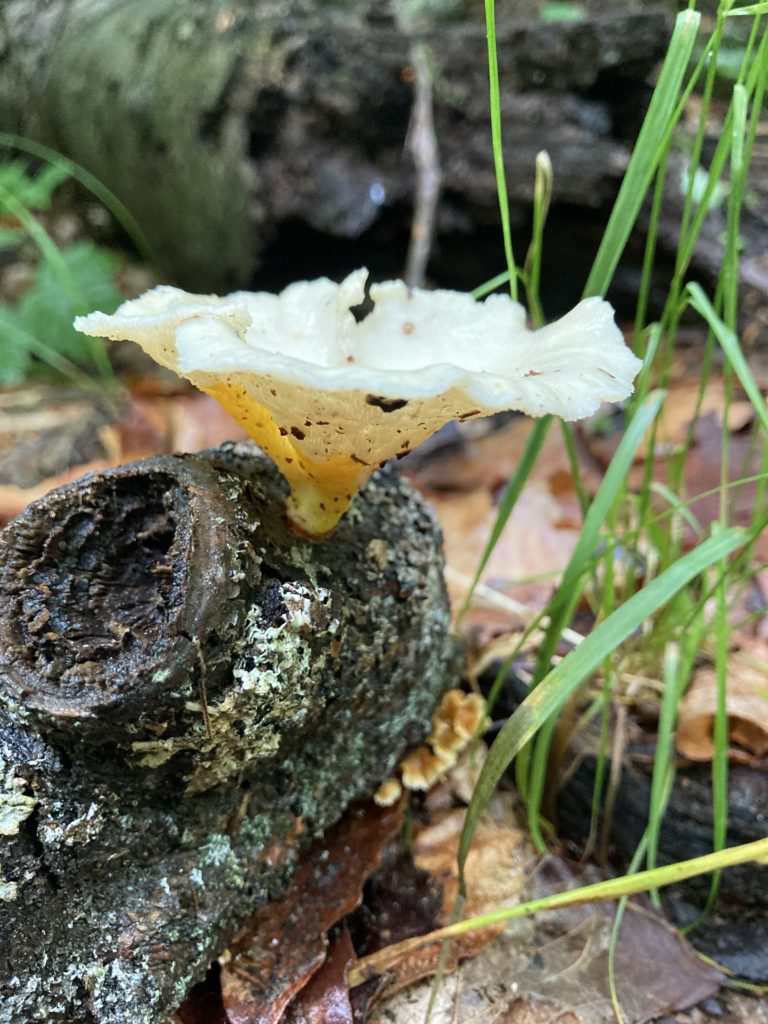
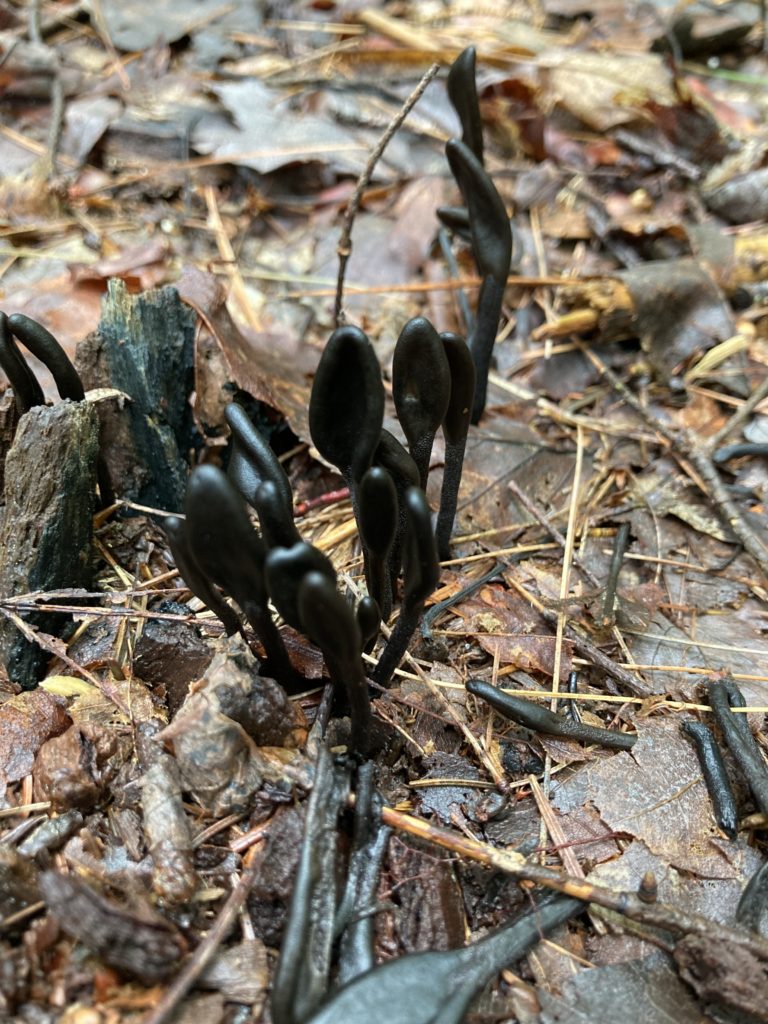
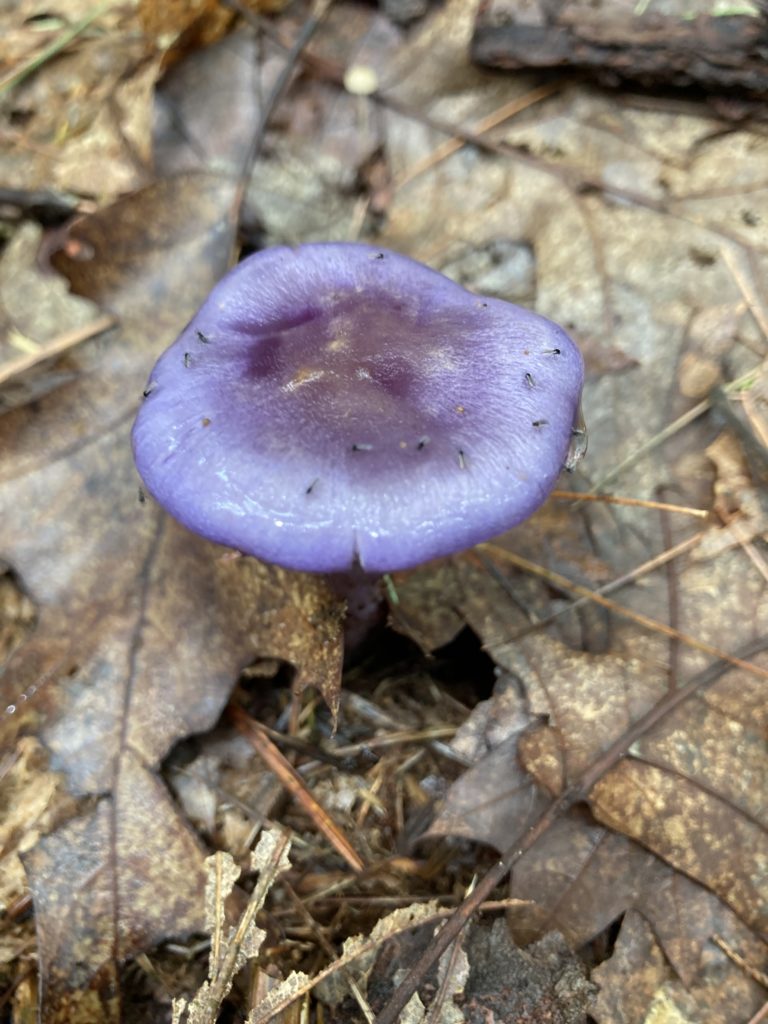
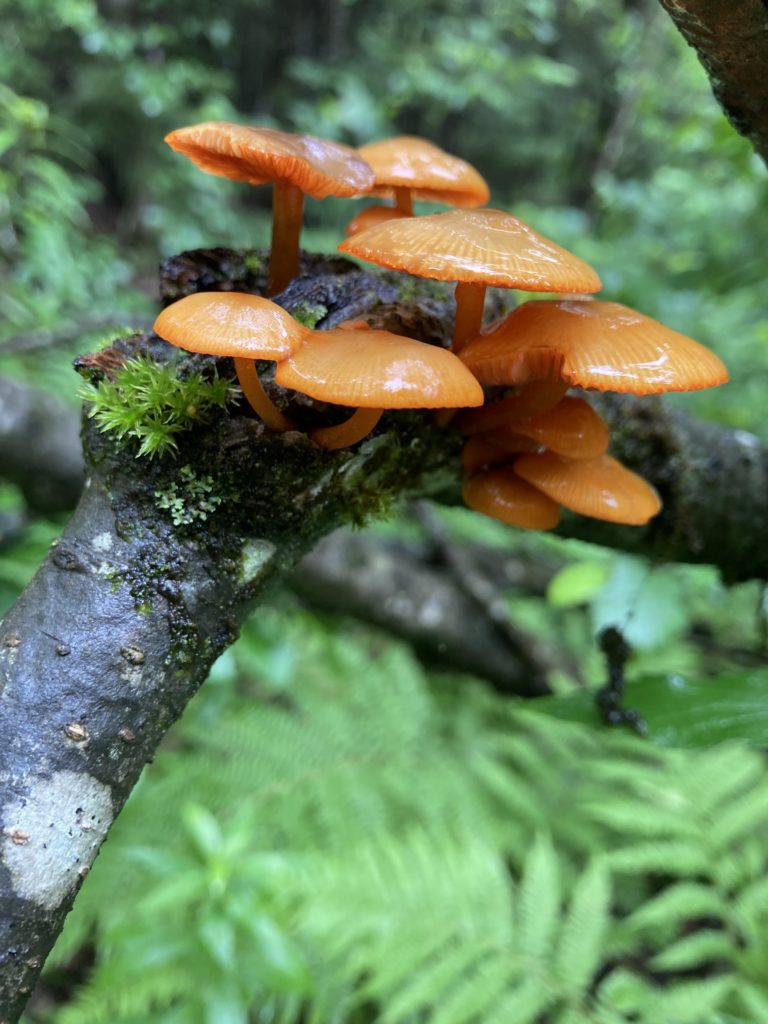
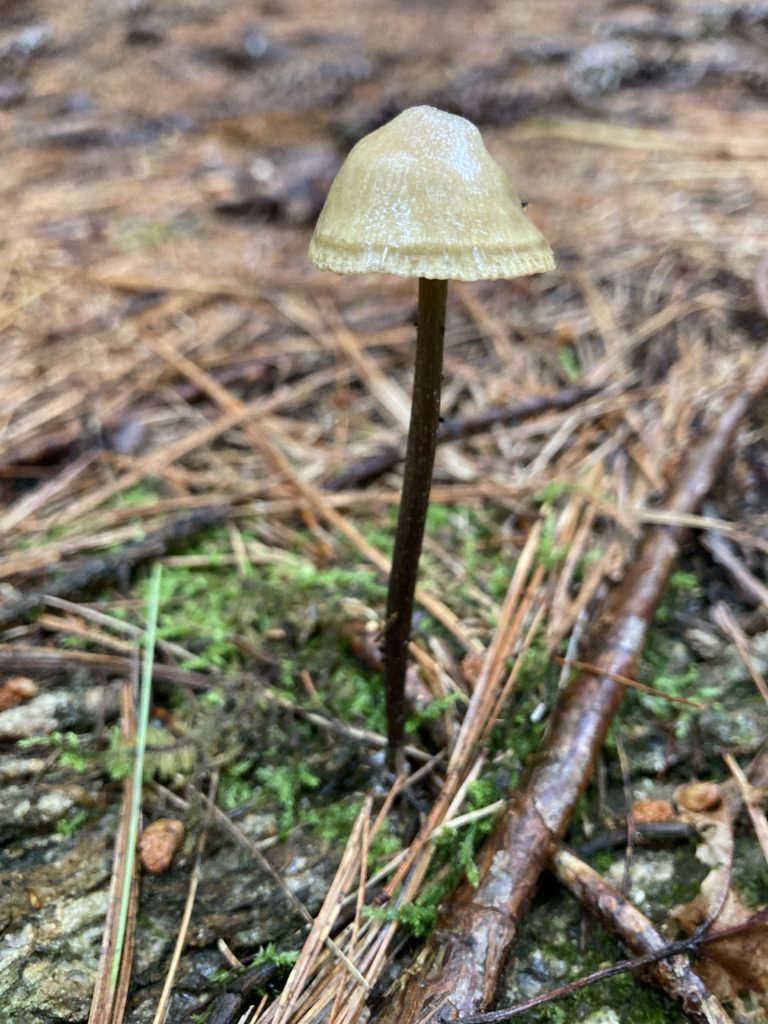
Almanac is a regular Indy column of observations, musings, and occasional harangues related to the woods, waters, mountains, and skies of the Pioneer Valley. Please feel free to comment on posts and add your own experiences or observations.

These are amazing! We used to hike Cardigan Mountain but never saw anything like these. Indeed, we’re never seen the likes of these fungi anywhere. Thanks for sharing.
Absolutely stunning, Steve! Who knew that such beauties have lurked unsuspected for years?
Ahh… awe….
And – not to rain on your fungal parade – a cautionary tale from 18 years ago this autumn:
We celebrated the 60th birthday of a friend and mathematics collaborator with a weeklong research conference at an abbey in northeastern France. The food was local, simple and wonderful, with various fungi incorporated into almost every meal.
As typical of such math meetings, we put math aside on Wednesday afternoon to take a long, rainy hike up along the river that flows by the abbey, returning on higher ground through the damp forests overlooking the valley.
Some in the group were expert mushroom hunters and they gathered a few edible fungi on the way back to be prepared for their dinner table. This group of 6 enjoyed their extra course with a bit of hunters’ pride, while the rest were disappointed that we had not partaken.
All went well until the wee hours of Thursday when everyone at the table of the fungal feast was rushed to the local hospital. Now the rest of us – worried for their health but grateful to have been spared – wondered aloud how eating these well-known edible fungi could have had such a dire effect on our colleagues….
The mystery was answered when le demi-douzaine returned – still woozy, but very much alive – around supper time Thursday: because of the extraordinarily wet weather there in autumn 2003, the usually edible fungi had been colonized by another microscopic species of fungi that was mildly toxic to humans!
A simple case of fungi eating fungi eating fungi (eating fungi (eating fungi…)…)!
So, even when eating something as earthy as fungi, one needs to eat low on the food chain!
Pardon, mon c’était en 2002, pas en 2003!
Love this piece — I’ve been appreciating the large numbers of mushrooms on my property that I don’t commonly see here ….